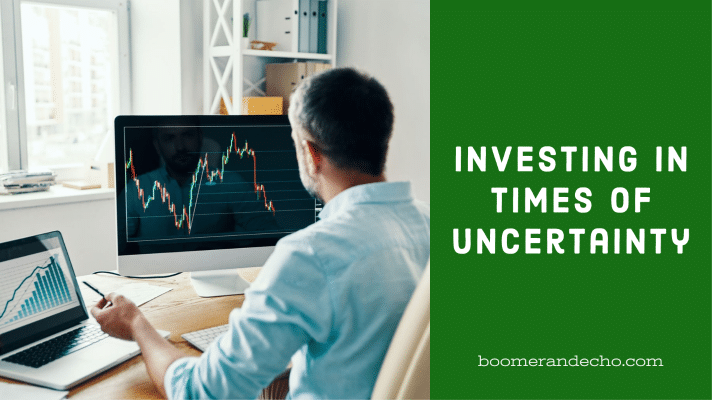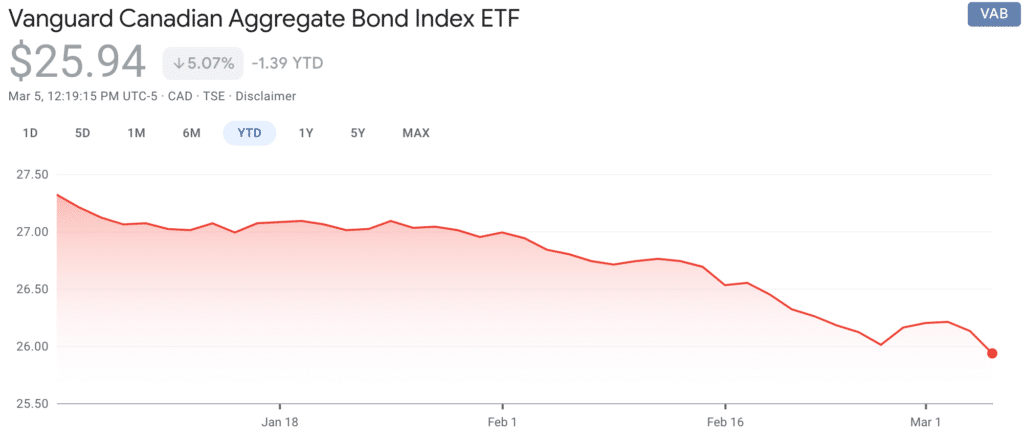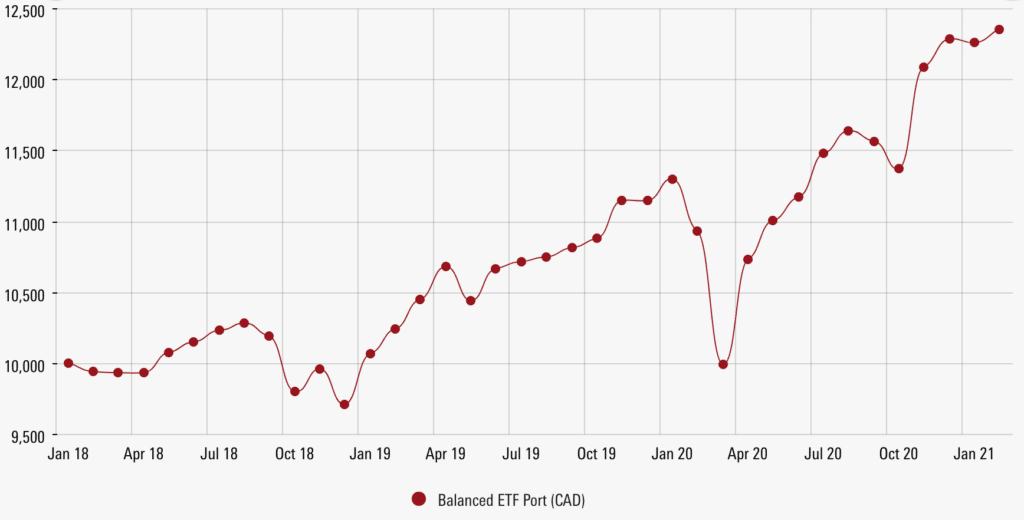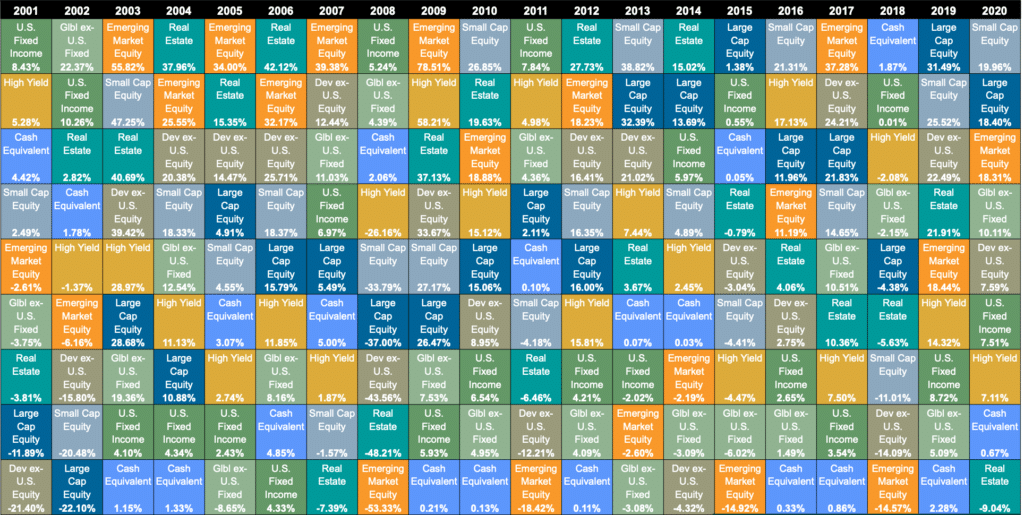
It has been 13 months since we’ve travelled anywhere outside of our provincial borders. Trips to Italy and the U.K. were cancelled and we’ve spent the past year cooped-up at home (for the most part) fantasizing about future travel plans.
With vaccines now rolling out across the world there’s growing optimism that we’ll return to some kind of normal by this summer or early fall. Those fantasies might soon turn to reality as industry experts predict an unprecedented amount of travel as soon as we’re able to do so. Dubbed “revenge travel“, the pent-up demand to get away after a year of domestic drudgery is expected to lead to an incredible surge in travel bookings later this year and into 2022.
I feel this.
One obvious perk of my online business is that I can do it from anywhere. No longer confined to a set amount of vacation days, my wife and I are free to travel anytime our kids are out of school. That didn’t go as planned this past year, but as we come out of the pandemic we’re starting to plot out what our lifestyle design could look like during the 2021-22 school year and beyond.
First up on our revenge travel bucket list is to re-create our Italy and U.K. trips. We’re looking at April 2022 during Easter break for Italy, and summer 2022 for the U.K.
Depending on when we get vaccinated and when travel restrictions open up we’ll consider a trip to Vancouver and Victoria later this summer, and a trip to Maui during the kids’ week-long break in October.
We don’t intend to leave the country until the re-entry requirements are lifted.
We’ll have missed out on 18 months or more of our planned lifestyle design. And, while I recognize the immense privilege of being in a position to travel the world and work from anywhere, I can’t help but feel like we have some catching up to do. Our kids are only going to be this age once, so we want to provide them with enriching experiences that can only come from seeing the world and spending time in other cultures.
Last year, when the shelter-in-place restrictions began, I started using a cash back credit card for our everyday spending. But we’re still sitting on a bunch of unused travel rewards that are waiting to be deployed. Those include:
- Aeroplan – 625,000 miles (worth $9,375 at 1.5 cents per mile)
- WestJet – $2,800 in travel credits, plus 2 companion vouchers
- American Express – 29,000 Membership Rewards (worth $290), plus $400 in annual travel credits
- HSBC – 125,000 points (worth $625 at 0.5 cents per point), plus $100 in travel credit enhancements
- TD Rewards – 280,000 points (worth $1,400 in travel rewards at 0.5 cents per point)
- Marriott Bonvoy – 285,000 points (worth $2,565 at 0.9 cents per point)
That’s $17,555 worth of travel rewards waiting to be put to use.
This is a good time to remind you that redeeming your travel points for gift cards and merchandise is typically the least valuable way to cash in your points. You’d easily cut that dollar value in half.
Do you have some revenge travel destinations in mind for when the world opens up again? Let me know in the comments below.
This Week’s Recap:
Two weeks ago I wrote about investing in times of uncertainty. Remember, your strategy shouldn’t change based on market conditions. Volatility is normal.
Early this week we had Willful’s Erin Bury here to share 4 famous wills in history and what they can teach Canadians about estate planning.
From the Rewards Cards Canada archives: Here’s how much it costs to go to Maui.
Promo of the Week:
The RRSP deadline has passed, and tax season is upon us. Taxes aren’t the only inevitability in life – we should all be thinking about end-of-life planning, and checking “get a will” off our list.
Our partners at Willful can help you create a will and power of attorney documents online starting at just $99, with free updates as your life changes. They’re now in 8 provinces, including a fully bilingual site in Quebec. Use code BOOMER for 10% off any plan – get started at willful.co.

Weekend Reading:
Last week I received an email from PC Financial explaining why they were downgrading me from the World Elite MasterCard to a basic or World MasterCard. Apparently they are now enforcing a $15,000 minimum annual spend to qualify for the World Elite version. Our friends at Credit Card Genius have the details.
Travel expert and pizza lover Barry Choi reviews a new subscription service called General Assembly Pizza. Sounds delicious!
What the heck are non-fungible tokens and why are people paying hundreds of thousands (even millions) of dollars to get a piece of the action? Family Money Saver explains what NFTs are and why the digital tokens are “worthless garbage”.
Lisa Jackson and Bridget Casey explain how women can grow their wealth in an unequal society.
Here’s an in-depth look at Cathie Wood’s famous ARK ETFs and why investors should think twice before boarding this ship.
Speaking of ARK, the Irrelevant Investor Michael Batnick asked why do some people hate Cathie Wood?
“Most of the people hoping for Ark to come back down to earth are traditional stock pickers. They have had a difficult time over the last decade, especially if their style skews towards value. The market has rewarded high growth and high cash burn companies for a long time now. The backdrop that fuelled her success has led to their failure.”
Millionaire Teacher Andrew Hallam shares how the 50/50 Couch Potato portfolio beat the US stock market for 20 years.
This Refinery29 piece checks in with eight Canadians who lost their jobs to see how they’re holding up and how they feel about their careers.
In his latest article for the Evidence Based Investor, Larry Swedroe looks at market efficiency and the case of Pete Rose:
“Despite the evidence, many investors have a difficult time understanding why smart investors working hard cannot gain an advantage over average investors who simply accept market returns. The world of sports betting provides an analogy that helps to explain why the “collective wisdom of the market” is a difficult competitor.”
Investment planner Darryl Brown shares two ways to shut out market hype when your emotions are impacting your investments.
PWL Capital’s Ben Felix looks at the Endowment Model that large institutional investors use to allocate their investments, including hedge funds, private equity, and private real estate:
Finally, here’s a trifecta from A Wealth of Common Sense blogger Ben Carlson:
First, is diversification finally working?
Next, here’s the simplest asset to hedge against inflation.
And, Carlson looks at the difference between owning individual stocks and owning the stock market. This is an important message for investors who stray into individual stock picking. The range of outcomes, or dispersion of returns, are so much wider with individual stocks (from -100% to +to the moon). Investing in a broadly diversified portfolio will lead to more reliable long-term outcomes.
Have a great weekend, everyone!

If COVID-19 has taught us anything, it’s that we need to be prepared for the unexpected. Emergency planning has never been more top of mind for Canadians, and yet Willful research shows 57% of Canadians don’t have a will.
End-of-life planning typically isn’t at the top of our to-do lists because it can be complex, expensive, and – let’s face it – uncomfortable to think about. But there are lots of fascinating stories about famous wills in history that make it a bit more engaging, and hopefully educational.
So read on as we tour you through dogs who inherited millions, a will that inspired women in Toronto to have as many babies as they could, and why one Canadian wrote their will while eating a Big Mac.
Case #1: The tractor
Back in 1948, before online wills were a thing, a Saskatchewan farmer named Cecil George Harris became trapped under his tractor. Fearing he wouldn’t make it, he etched a will into the fender of his tractor with a pocket knife, writing:
“In case I die in this mess I leave all to the wife. Cecil Geo Harris.”
After being trapped for 10 hours, he was taken to hospital but sadly passed the next day. The will scratched into the fender was upheld as his valid will, since holograph wills (handwritten wills) are legal in all provinces except BC and PEI.
The fender from the tractor now sits on display at the University of Saskatchewan College of Law, and it has become the most famous case of a handwritten will in Canadian history.
What it teaches us: As long as a will is written entirely in your handwriting and signed by you, it’s legally valid – whether it’s written on the side of a tractor or not. Remember if you are writing your own will that it likely won’t be as comprehensive as a will created on a platform like Willful or with a lawyer – a will isn’t just about who gets your assets, it’s also about appointing an executor and guardians for any minor children or pets. And remember to tell your executor or family where you’ve stored it! Aretha Franklin’s family found a handwritten will in her couch cushions a year after her death.
Case #2: Stork derby
In 1926, prominent Toronto lawyer and financier Charles Vance Millar died. He had an estate worth $1M ($14M in today’s dollars), and he didn’t have a spouse or any heirs.
Typically in this situation people may pass things on to a charity, but not Charles. He had a sense of humour, so he built practical jokes into his will – for example he gifted his shares in a beer company to Protestant ministers; and he gifted a property in Jamaica to three lawyers who hated each other (and if any of them sold, the proceeds would go to a local city).
But his most controversial clause was that the rest of his fortune was to be given to the woman in Toronto who gave birth to the most children in a 10-year period. Despite challenges from relatives and Ontario’s Attorney General, the Supreme Court of Canada upheld the will, and it became known as The Great Stork Derby. It made headlines around the world, and four women received the equivalent of $2 million each for having nine children in 10 years.
What it teaches us: This is a wild story, and it shows how people without heirs will get creative in how they pass on their assets. It’s much more common to leave a gift to charity, friends, or other family members if you don’t have children. In fact leaving a gift to charity in your will is one of the ways you can have a positive impact when you’re gone – you can either leave a bequest (a specific item/amount of money), or a portion of your estate to an organization you care about.
Case #3: The McDonald’s napkin
These days we’re all hitting the fast food drive-thru or ordering on UberEats, but sometime between 2006 and 2015 a Saskatoon man was dining in at a local McDonald’s. While he was chowing down, he started feeling the symptoms of a heart attack – afraid he was going to pass away under the golden arches, he took pen to napkin and jotted down his will right there in the booth.
The napkin will was brief – it said, “Split my property evenly, Dad Philip Langan.” Well, it turned out that Philip wasn’t actually having a heart attack, but he decided to pass the napkin on to his daughter anyway for safekeeping.
Related: Willful Review – Online Wills for $99
After he passed away in 2015, the daughter produced the will. Philip had a total of seven children, and one of them wasn’t feeling the napkin will – she disputed the validity of the will in court, but in February 2020 a judge upheld the napkin will as valid. The judge said that since the napkin was passed on to the daughter, and she said to keep it in case anything happened to him, it demonstrated “testamentary intention.”
What it teaches us: If a will is challenged, the judge will always look for testamentary intention – what did the testator (the will-maker) actually intend? It’s important to be clear with your wishes, and it’s equally as important to say what you DON’T want as what you do – for example if you want to ensure someone is disinherited or cut out of your will, stating that in the will and providing any additional details can ensure your wishes hold up after you’re gone.
Case #4: The world’s richest dog
This has to be my favourite story about a will, mostly because it centres around a dog. It starts with German Countess Karlotta Liebenstein, who died in 1992 and left her $65 million fortune to her German Shepherd Gunther III (like Millar and the Stork Derby, she didn’t have any heirs). When Gunther III passed away, the fortune was passed on to Gunther’s son, Gunther IV.
You may be wondering who actually managed that money – that would be the human trustees, who were in charge of investing it. They did such a good job that it turned into $375 million – still for the sole purpose of caring for a dog.
Gunther, unsurprisingly, is now the richest dog in the world. Madonna even sold a mansion to Gunther worth $7.5 million – in an article about the purchase, it said “Gunther will be taking over Madonna’s master bedroom, while the rest of the mansion is used for filming and fashion shows.”
In case you’re a cat lover, I’m sorry to say that the richest cat only inherited $12.5 million.
What it teaches us: It’s very common for people to want to ensure their pets are cared for when they’re gone – in fact one of the top reasons pets end up in shelters is their owners haven’t accounted for who would care for them when they pass away. On Willful you can appoint a pet guardian to care for them, and leave money for their care – but if you’re leaving millions, maybe ask yourself what Fluffy is going to do with all that cash.
—
That’s it, four of the most famous wills in history. Hopefully you’ve learned a thing or two that you can you apply to creating or updating your own will – and if you’re looking for an easy way to do that, check out online will platform Willful – you can use code BOOMER for 10% off any plan.
Erin Bury is the co-founder and CEO at Willful. She does not have any pets, but if she did she would likely leave them millions.

It’s easy to stick to your long-term investing plan when times are good. Indeed, if your investment portfolio had any U.S. market exposure at all over the past 12 years you’ve likely enjoyed nearly uninterrupted growth.
Of course, there are always bumps in the road. Stocks fell sharply in a short period between February and March 2020, the swiftest decline in history. The world was shutting down in response to the COVID-19 pandemic and investors panicked. But stocks came roaring back and the S&P 500 ended the year with a gain of 18.4%. Things were good again. Until they weren’t.
Investors have been worried about a prolonged stock market crash for years. Those fears are heightened each year that stocks continue to rise. Surely this can’t last forever. Meanwhile, as we come out of the pandemic, there’s anxiety over inflation and rising interest rates, which has put downward pressure on bond prices. Long-term government bonds are down 12% on the year. U.S. treasuries, the ultimate safe haven, are down 3.3%.
In uncertain times we look to economic forecasts and predictions of what’s to come. There’s no shortage of opinions, so it’s easy to find one that fits your narrative. It’s hard not to listen when legendary investors like Jeremy Grantham call this the greatest bubble since 1929.
So, what’s an investor to do when stocks are poised to crash, bonds are in a free-fall, and cash pays next to nothing? Even gold, often pegged as an inflation hedge and portfolio diversifier, is down nearly 10% year-to-date.
Are you properly diversified?
Is your portfolio as diversified as it should be? Does it have a mix of Canadian, U.S., International, and Emerging Market stocks? A mix of short-term and long-term corporate and government bonds?
Are you judging your portfolio as a whole or by its individual parts? It’s never easy to see a specific holding fall in value. It makes you wonder why you hold it at all. Bond holders must be feeling that way right now.
If you hold Vanguard’s Canadian Aggregate Bond Index (VAB), you’re likely not pleased to see this performance:

When you add U.S. and Global bonds to the mix, the results are similar but slightly more favourable:

Now let’s add Canadian, U.S., International, and Emerging Market stocks to the portfolio using Vanguard’s FTSE Canada All Cap Index (VCN), Vanguard’s U.S. Total Market Index (VUN), Vanguard’s FTSE Developed All Cap ex North America Index (VIU), and Vanguard’s FTSE Emerging Markets All Cap Index (VEE):

When you put all seven of these ETFs together you get Vanguard’s Balanced ETF portfolio (VBAL). Each part following its own unique path, but blended together using a rules-based approach that maintains the original target asset mix through regular rebalancing.
Here’s how that looks over a three year period (since VBAL’s inception):

This is what diversification looks like. While some individual parts lag behind, others lead the charge and drive the overall returns. Regular rebalancing helps ensure you always buy low and sell high while managing your risk and return. The result is a compound annual growth rate of 7.3% since 2018.
Perhaps the best way to visualize how diversification works is by looking at the periodic table of investment returns over the past 20 years (source: www.callan.com):
Last year’s winner is often next year’s loser. Every asset class has had its turn at or near the top, including large cap stocks, small cap stocks, emerging markets, real estate, bonds, and yes, even cash (once).
Do you think you can predict which assets will lead the way in 2021 and beyond? Unlikely. That’s why it’s best to diversify broadly so you can capture market returns without trying to guess where to park your money.
What about pulling out all of your investments and moving to cash? Well, cash was the worst performing asset class in eight of the 20 years. Even in 2008-09 bonds were the better bet.
Have you rebalanced?
I’ve written before about investors getting distracted by shiny objects like cryptocurrency, technology stocks, and high-flying fund managers. Even seasoned investors were moving more of their money into U.S. stocks, technology stocks, and Bitcoin to capitalize on rising markets.
Indeed, why hold bonds at all when every other asset class has been soaring?
The result is a portfolio and asset mix that is likely out of step with your original goals.
Rebalancing is counterintuitive because it forces you to sell what’s going up in value and buy more of what’s going down. It’s tough to wrap your head around selling U.S. stocks to buy more Canadian stocks. Or worse, to buy more bonds.
It’s even more difficult in uncertain times. It’s easy to look back at March 2020 or March 2009 as buying opportunities of a lifetime for stocks. But in the moment it probably felt terrifying to even be holding stocks at all.
Today, nervous investors are worried about holding bonds. What should be the stable portion of their portfolio is suddenly underwater and signs of future upside are nowhere to be found.
Damir Alnsour, a portfolio manager at Wealthsimple, has heard from many of these anxious investors in recent days. They’re asking questions like, will bonds keep going down?
“The answer is that no one really knows if it is likely to continue, but we always look at our portfolios with a long-term lens because we don’t allocate our investments based on short-term market performance. We expect that in the future there will be times where stocks are doing well, and bonds are underperforming but also the opposite. We can’t predict these times, and we don’t think anyone else can either,” said Alnsour.
He encourages his clients to take a 30,000-foot view and remember the reason their portfolio includes bonds. Bonds are a long term source of return that improve the stability of your portfolio because they often react to changes in the economic environment differently than stocks.
“During most of the major stock market downturns historically, bonds have increased in value and helped cushion losses,” said Alnsour.
Just like the three-year chart of VBAL’s returns, a well-balanced and diversified portfolio is expected to rise over time – after all, that’s why we invest in the first place. But it’s normal for the same portfolio to suffer minor short-term losses along the way that can sometimes take weeks or months to recover.
Back to Wealthsimple’s Alnsour:
“Also, keep in mind, we would rebalance the portfolio if bonds were to continue to sell-off. What this means is that should the bond allocation drop below our rebalancing threshold, we would sell some equities to add to bonds and therefore pick up more fixed income at a cheaper price and better yields (just as we would have sold bonds to add to your equity position in March of 2020!).”
Don’t Just Do Something, Stand There!
Your portfolio is like a bar of soap. The more you touch it, the smaller it gets. Yet in times of uncertainty we can’t help but feel like we need to do something to curb losses or increase gains.
The better choice, assuming you have a well-diversified and automatically rebalancing portfolio, is to log out of your investing platform, close your internet browser, and do nothing. Focus on your family, friends, hobbies – anything that will prevent you from logging back on and seeing your investments in the red.
As PWL Capital portfolio manager Benjamin Felix says, “your investment strategy shouldn’t change based on market conditions.”
That’s right. You identified your risk tolerance and time horizon, and chose your original asset mix for a reason. You understood that markets fluctuate, often negatively, for periods of time and that is out of your control. Yet when markets are going through their downswing, you feel compelled to change your approach.
Let’s go back to the term, “uncertainty”. Isn’t the future always uncertain? When are we investing in certain times?
Pundits and market forecasters often paint a bleak future, like Grantham’s 1929-style crash or Dr. Doom Nouriel Roubini calling for hyperinflation. The truth is nobody knows how this will play out.
What if you make a tactical shift to your investment strategy and you’re wrong? There are plenty of investors who moved to cash after the global financial crisis and never found their way back into the stock market. Once you convince yourself of a particular narrative it’s nearly impossible to admit that you were wrong and change course.
Final Thoughts
It’s reality check time for investors. We’ve been in a bull market for 12 years (minus a few blips). Almost everything has worked, which can lead to overconfidence in your investing skills. Meanwhile, many investors have strayed away from their original goals to chase even higher returns from U.S. stocks, technology stocks, and the like.
It’s time to check in on your portfolio and make sure it’s broadly diversified and risk appropriate for your age and stage of life. It’s time to rebalance, if you hold multiple funds, and get back to your original target asset mix. Finally, if you’re already invested in an appropriate asset allocation ETF or robo-advised portfolio, it’s time to do nothing. Don’t change your investing strategy based on market conditions.
Take a long-term view of your investments rather than looking at the daily changes (which can be maddening). That’s how to invest in uncertain times.

